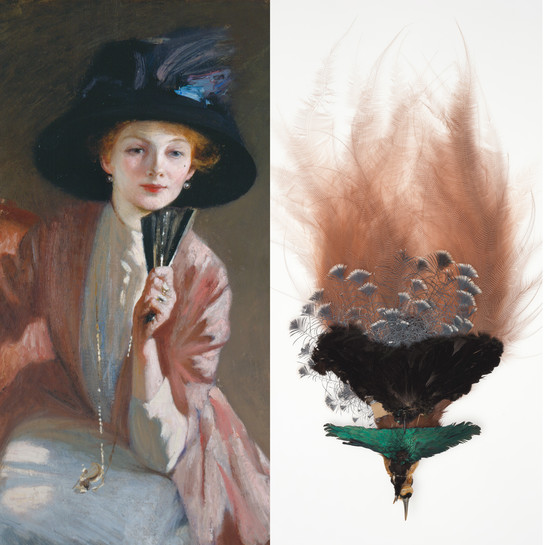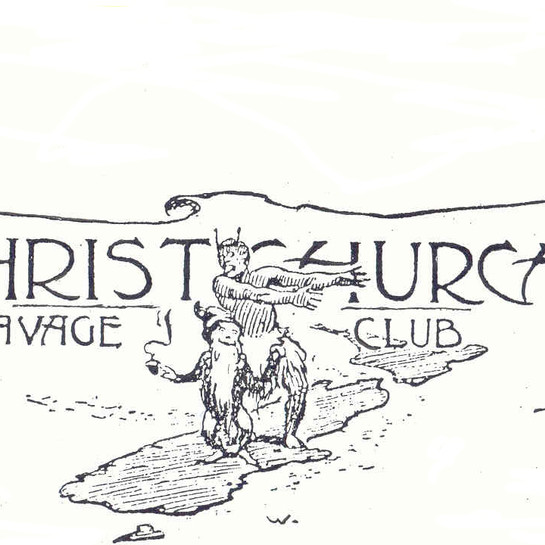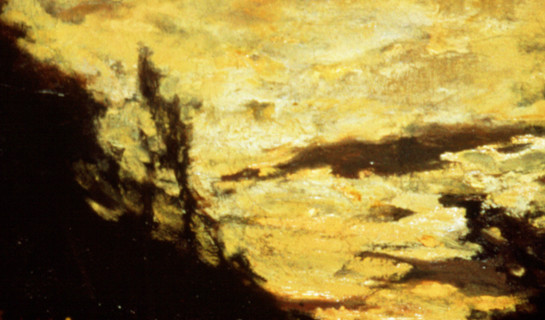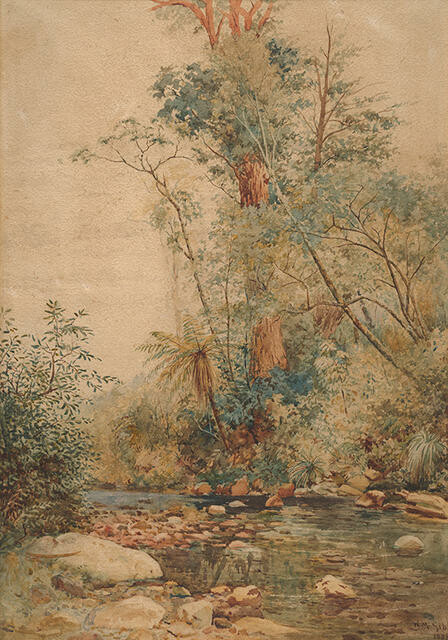William Menzies Gibb
Scotland / Aotearoa New Zealand, b.1859, d.1931
Edge Of The Bush, Pigeon Bay 1886
- 1886
- Watercolour
- Presented by Mrs Elizabeth Britton, 1960
- 496 x 346mm
- 69/66
- View on google maps
Location: Sir Robertson and Lady Stewart Gallery
Tags: academicism, bush (wilderness), landscapes (representations), plein-air, rivers, rock, streams, trees
This delicate study of remnant native kahere on Horomaka Banks Peninsula reveals William Menzies Gibb’s skilful brushwork and eye for detail, as well as his ability to convey atmosphere. It was made outdoors, rather than in the studio, and he would have been surrounded by the sights and sounds of the bush, from the high-pitched piping of the riroriro to the whooshing wingbeat of the many kererū that gave Wakaroa its English name of Pigeon Bay. Scottish-born Gibb became part of the Christchurch Palette Club, formed in 1890 to encourage plein air painting. Its members, including noted watercolourist Margaret Stoddart, believed that rapidly worked, first-hand impressions of nature conveyed a scene more vividly than any laborious ‘potboiler’.
kahere forest
riroriro grey warbler
kererū wood pigeons
(He Kapuka Oneone – A Handful of Soil, 2025)
Exhibition History
Ship Nails and Tail Feathers, 10 June – 22 October 2023
When you walk through Hay Reserve in Pigeon Bay on Horomaka Banks Peninsula you start to get a sense of what has been lost through deforestation in the nineteenth and twentieth centuries. For here, in this tiny remnant of the once vast forests covering this landscape, not only is the visitor left in awe at the scale of the mature kahikatea, tōtara and mataī, or the density of the bush below these giants, but also the very notable presence of beautiful birdsong from the likes of the riroriro (grey warbler), korimako (bellbird) and pīwakawaka (fantail).
This plein air (outdoors) study of a remnant of native New Zealand bush at Pigeon Bay on Banks Peninsula illustrates Gibb’s lively yet accurate style. He has carefully observed the plant forms of the dense bush and recorded them with confident watercolour washes. Menzies Gibb worked in an academic manner throughout much of his career, developing outdoor sketches and studies in his studio, where he could complete more detailed and highly finished paintings. As this watercolour demonstrates, however, he also painted directly from nature. Born in Innellan, Scotland, William Menzies was the son of Canterbury painter John Gibb. He studied at the National Gallery School in Melbourne in 1880-81, and returned to Christchurch the following year. He exhibited at the first Canterbury Society of Arts exhibition in 1881 and continued to be actively involved on the society’s council throughout his career. He was also a member of Christchurch’s more progressive Palette Club, formed in 1890.
(Label date unknown)




